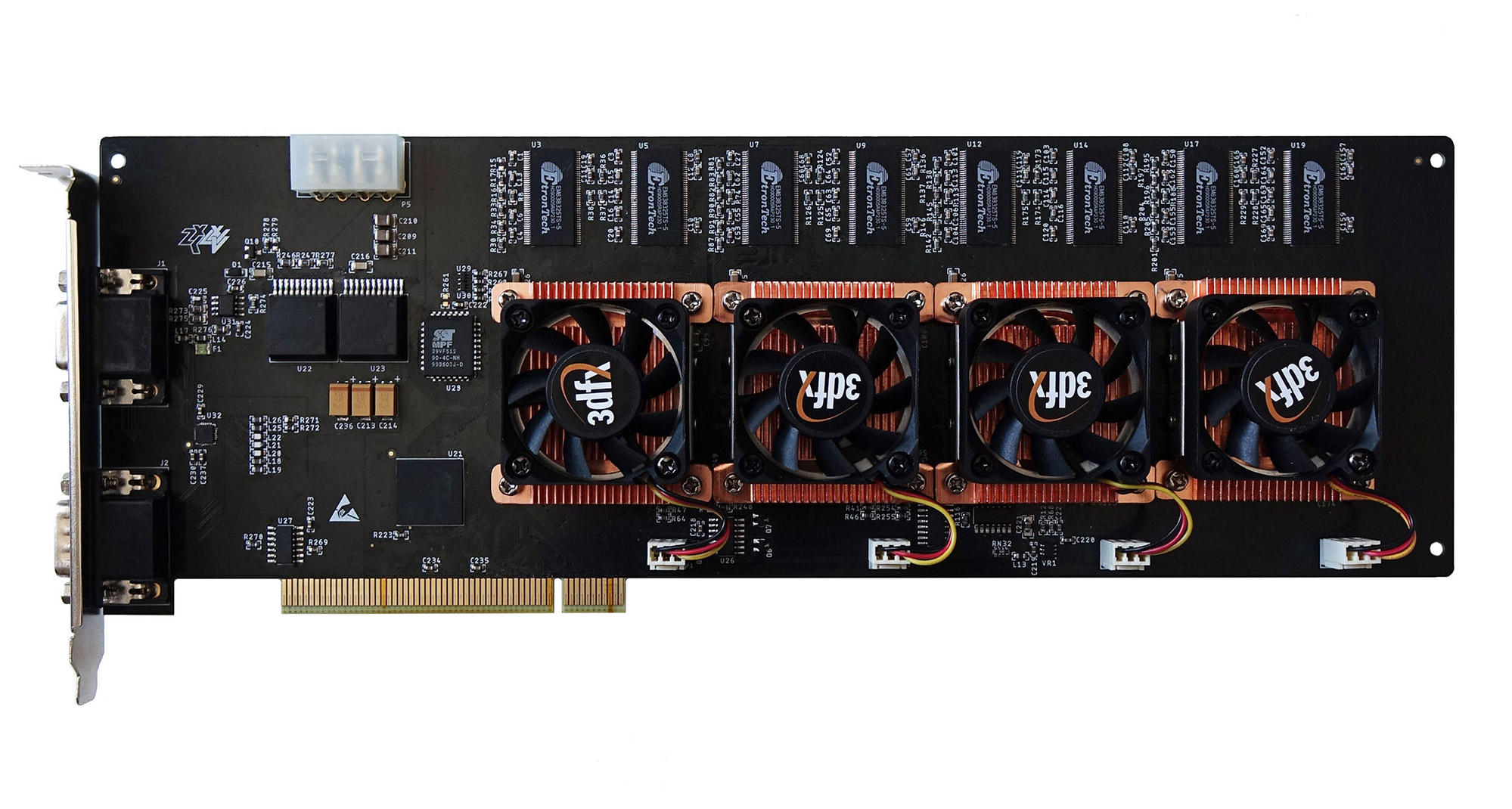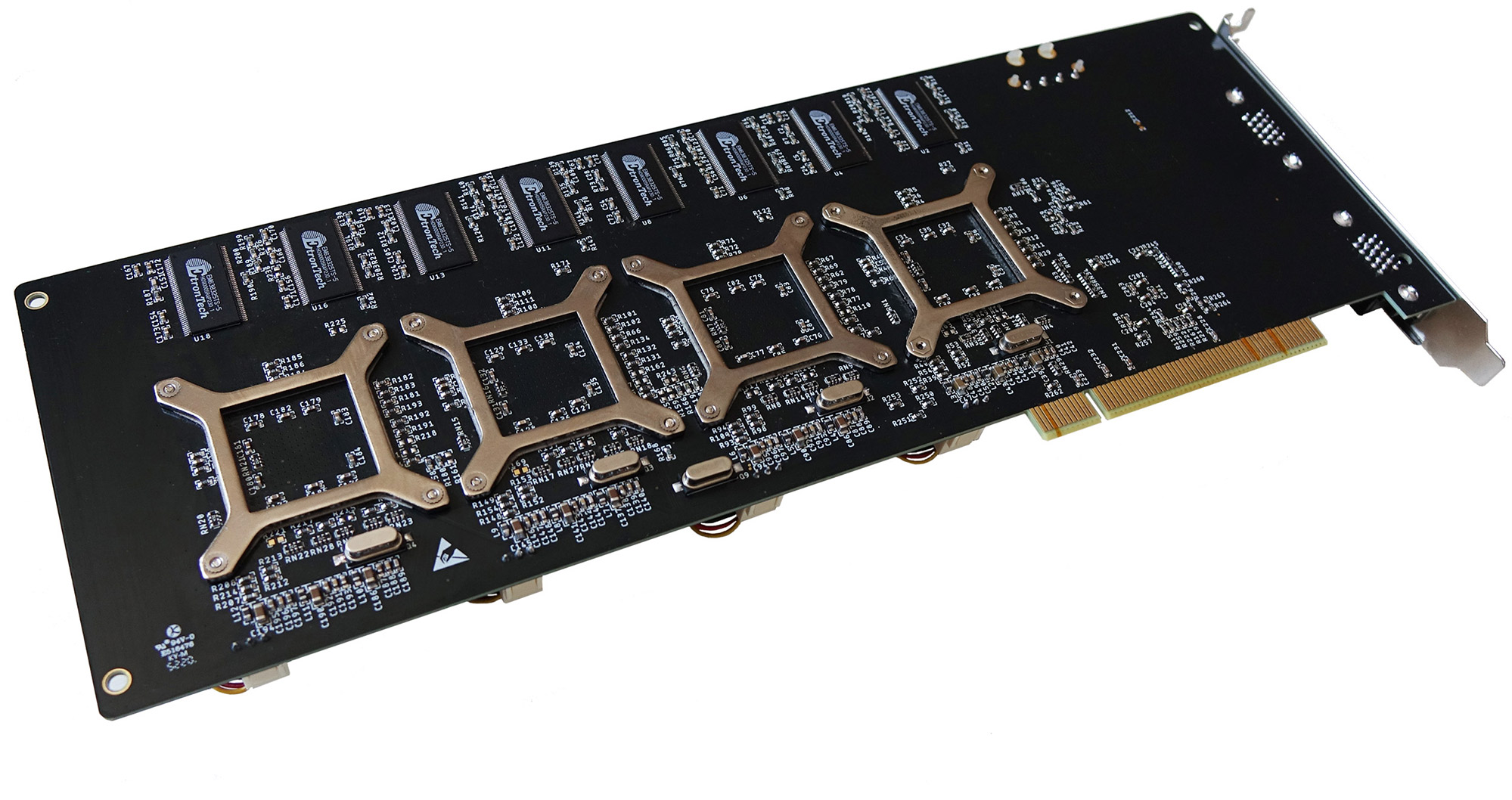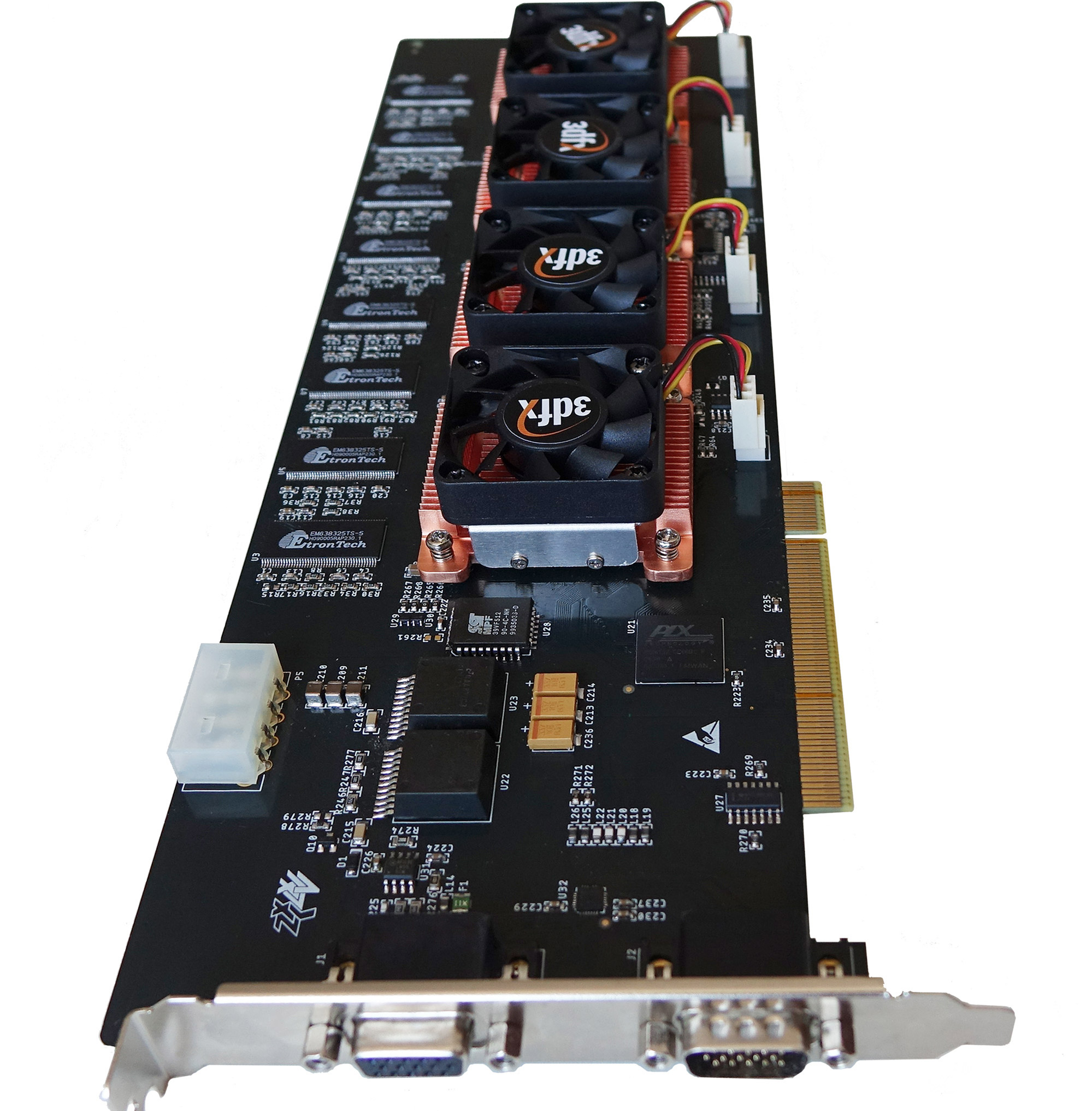3dfx Voodoo 5 6000 Comes Back To Life Better Than Ever
As spotted by HotHardware, Anthony, a hardware enthusiast from the Mod Labs forums, has recreated 3dfx Interactive's renowned Voodoo 5 6000. The company never released the Voodoo 5 6000 to the public, but the skillful enthusiast managed to revive the fallen graphics card through some exquisite reverse engineering work.
You might not have even heard of 3dfx, and we don't blame you because it has been ages since we've heard that name. For the uninitiated, 3dfx was one of the key players in the graphics card market, next to Nvidia and ATI. The company closed its doors in 2002, but it's still widely regarded as one of the pioneers of the graphics card market.
Voodoo 5 6000 was a single-slot graphics card based on 3dfx's VSA-100 (Napalm 30) die, or rather four of them, and it was quite the GPU back then. The VSA-100 chips, which measured 112mm², housed up to 14 million transistors. TSMC was responsible for producing the VSA-100 for 3dfx on the foundry's 250nm process node. Each VSA-100 had up to two pixel shaders; therefore, the Voodoo 5 6000 had eight of them in total, running at 166 MHz. On the memory side, the Voodoo 5 6000 featured 128MB (4x32MB) of SDRAM clocked at 166 MHz. Across a 128-bit memory interface, the Voodoo 5 6000 provided up to 2.656 GBps of memory bandwidth.





Anthony's creation isn't exactly a faithful copy of the original Voodoo 5 6000, but some may argue that it looks even better. Instead of the old-school green PCB, he created his own black PCB, which adds a bit of a modern look to the graphics card. He equipped it with four VSA-100 dies, which cost $18.95 apiece, with their corresponding heatsinks and cooling fans.
The Voodoo 5 6000 was certified for a TDP of 60W, which is more than the AGP slot can provide. Therefore, it drew its power through an external 250W power brick. Anthony artfully added a standard 4-pin Molex power connector to his rendition of the Voodoo 5 6000 to run the graphics card with a common computer power supply. Putting aside these small changes, Anthony assures that his Voodoo 5 6000 performs the same as the original because he replicated the same BIOS, drivers, and even the same bugs.
Aside from the high production cost, 3dfx didn't launch the Voodoo 5 6000 due to several bugs with the AGP x4 slot on some motherboards. As a result, the graphics card was forced to run at x2. Some of the reported issues included color distortion and artifacts in games, translucent stripes on the screen, and other miscellaneous bugs.
Get Tom's Hardware's best news and in-depth reviews, straight to your inbox.

Zhiye Liu is a news editor, memory reviewer, and SSD tester at Tom’s Hardware. Although he loves everything that’s hardware, he has a soft spot for CPUs, GPUs, and RAM.
-
Dantte You completely missed 3DFX's biggest thing, they invented SLI, this is how the chips would talk to eachother. Nvidia bough out 3DFX when they went under and took the technology for their own.Reply
LOL, still remember having (2) Voodoo 2 with the VGA cable chained through them... the good old days! Then I got a TNT card and it left the voodoos in the dust. -
dehdstar I had the Voodoo 5000! As well as the Voodoo 1 and 2. The real problem with the Voodoo 5 was that it took too long to release and by that time the competition (Nvidia) was releasing DX8 GPUs e.g. would not have been able to perform the per pixel lighting that Geforce could, in preparation for Doom 3 and future titles. That was a catastrophic turn of events. But? It ran Unreal Tournament and Soldier of Fortune well enough! This was also the first GPU I performed a cooler mod on. Back then the cool thing to do was JB weld a large heatsink to the GPU and memory...using nothing more than Radio Shack heatsinks and effectively turning it into a 2 slot GPU. This afforded you some more OC headroom. Back then memory modules were naked and the GPU had a thin sliver of metal for a heat sink with a noisy rattley fan attached to it lolReply -
spongiemaster Reply
It's unknown whether any of 3dfx's SLI tech made it into Nvidia's. Despite using the same SLI label, the acronyms are different and their rendering methods are completely different. With 3dfx's SLI (scan line interleave), the cards drew alternating horizontal scan lines in every frame, while with Nvidia's SLI (scalable link interface), the cards drew alternating complete frames.Dantte said:You completely missed 3DFX's biggest thing, they invented SLI, this is how the chips would talk to eachother. Nvidia bough out 3DFX when they went under and took the technology for their own. -
Seabass83 I picked strawberries for two weeks so I could buy a 3dfx voodoo. Great memories of that card, it really transformed 3d gaming. Remember you had to pair it with a 2d gpu?Reply -
excalibur1814 Replydehdstar said:uld not have been able to perform the per pixel lighting that Geforce could, in preparation for Doom 3 and future titles. T
Doom 3? Do you mean Quake III Arena? Doom 3 came out YEEARRRS later. -
bernieo Reply
i forgot you had to pair it with a standard vga card . your right (y)Seabass83 said:I picked strawberries for two weeks so I could buy a 3dfx voodoo. Great memories of that card, it really transformed 3d gaming. Remember you had to pair it with a 2d gpu?
it was damned expensive at the time ,but the first time i fired the rocket launcher in Doom 1, I said to myself it was worth it .
no more blocky graphics .
we are going back a long way.
now its state of the art graphics ,except i cannot buy them (scalpers)
funny old world -
Reply
nVidia had a pending lawsuit for using 3dfx's tech. I'm not going into argument wether it was vaild. nVidia bought them, which wasn't surprising since 3dfx had financial issues. Bought the competitior, no problems with lawyers.spongiemaster said:It's unknown whether any of 3dfx's SLI tech made it into Nvidia's. Despite using the same SLI label, the acronyms are different and their rendering methods are completely different. With 3dfx's SLI (scan line interleave), the cards drew alternating horizontal scan lines in every frame, while with Nvidia's SLI (scalable link interface), the cards drew alternating complete frames.
I owned Voodoo 2 at the time. It was heluva fast. No fans, no noise and if one remembers how PC cases were cluttered with IDE cables at the time. Air flowe non existent ehehe. -
TimmyP777 Replyspongiemaster said:It's unknown whether any of 3dfx's SLI tech made it into Nvidia's. Despite using the same SLI label, the acronyms are different and their rendering methods are completely different. With 3dfx's SLI (scan line interleave), the cards drew alternating horizontal scan lines in every frame, while with Nvidia's SLI (scalable link interface), the cards drew alternating complete frames.
AFR is one of several nvidia SLI techniques. -
spongiemaster Reply
They both sued each other over patent infringements.tommo1982 said:nVidia had a pending lawsuit for using 3dfx's tech. I'm not going into argument wether it was vaild. nVidia bought them, which wasn't surprising since 3dfx had financial issues. Bought the competitior, no problems with lawyers.
I owned Voodoo 2 at the time. It was heluva fast. No fans, no noise and if one remembers how PC cases were cluttered with IDE cables at the time. Air flowe non existent ehehe.
Another problem with the Voodoo1/2 implementation was the need for pass thru cables to a 2D card also added a layer of blurriness to the CRT picture.